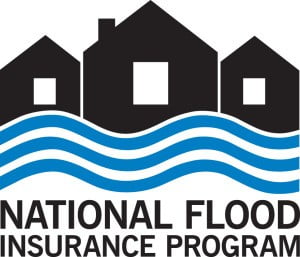Best Buys for the Week of February 25th
Contact Me About Any of These Properties!
Crucial Information regarding changes IN FORCE for the National Flood Insurance Program
 For the last several years the National Flood Insurance Program (NFIP) has experienced periods of expiration and availability of issuance policies. Each time Congress would pass a temporary bill extending the program for another short period. Finally a bill was introduced that would extend the program for 5 years and not have these continued interruptions. What we didn’t know existed in the several thousand pages of The Biggert-Water Act of 2012 were the changes in premiums and coverage that I will highlight below.
For the last several years the National Flood Insurance Program (NFIP) has experienced periods of expiration and availability of issuance policies. Each time Congress would pass a temporary bill extending the program for another short period. Finally a bill was introduced that would extend the program for 5 years and not have these continued interruptions. What we didn’t know existed in the several thousand pages of The Biggert-Water Act of 2012 were the changes in premiums and coverage that I will highlight below.
- First, these changes are not being imposed by FEMA or by the NFIP. These are legislative changes from Congress that can be undone by Congress with the right voices being heard.
- Starting January 1, 2013, any non-primary resident home that was built before flood maps were instituted (this is called Pre-FIRM) will see an increase in their premiums as the “discounts/subsidies” are removed.
- Starting August 1, 2013 commercial properties will have their subsidies/discounts removed and the new premium in place 25% per year for 4 years. For example, if the NEW, non-discounted premium is $5,000 per year and the old premium was $500 per year, the difference is $4500. The increase of the $4500 will apply 25% at a time over the next 4 years until the full premium of $5,000 is paid.
- Starting August 1, 2013, subsidies will be similarly phased out at 25 percent a year for severe repetitive (more than 4 claims) loss properties consisting of 1-4 residences, and properties that have incurred flood-related damages where claims payments exceed the fair market value. FYI – Severe Repetitive Loss means four or more claims payments of over $5,000 or two claims that exceed the value of the property.
- New policies written on pre-FIRM buildings (primary or non-primary residence) due to a sale or deliberate lapse will be issued at full-risk rates. THERE IS NO MORE GRANDFATHERING! Prior to the bill being passed, the flood map zone in effect at the time of construction remained with the house when it was sold.
- Beginning in 2014, premium rates for other properties, including non-subsidized properties – such as PRIMARY RESIDENCES AND SECOND HOMES BUILT AFTER 1974 – will increase as new or revised flood maps become effective. We are expecting new flood maps the latter part of 2014. This is not far off folks!
- Full risk rates will be phased in at 20% a year for five years for these properties. While FEMA works through the grandfathering issue on primary residences, they have removed the 2-year policy limit for the Preferred Risk Policy Extension until the new rates are implemented.
- When new flood maps become effective, they will include a rating for a new zone – a Coastal A Zone. This zone will affect areas behind the V-zone and other areas that experience a limit of wave action from 3 ft. to 1 ½ ft. For insurance purposes, a policyholder pays to the zone that touches his structure.
- Increases the limit for annual rate increases within any risk classification of structures from 10 percent to 20 percent. This means they can now raise your premium by 20% a year, anytime they deem necessary.
- Minimum annual deductibles on claims are changed to $1500 for coverage up to $100,000 and $2000 for coverage over $100,000 for pre-FIRM properties, and $1,000 and $1,250 for below and above $100,000 coverage for post-FIRM properties.
- Requires FEMA to notify property owners when their properties are included in, or are removed from, an area covered my mandatory insurance purchase requirements. Also requires notification of Senators and House Members whose States or Districts are affected by map changes.
- The Biggert-Waters Act of 2012 was included in H.R. 4348 – Surface Transportation Act found at http://www.gpo.gov/fdsys/pkg/BILLS-112hr4348enr/pdf/BILLS-112hr4348enr.pdf starting on page 512.
- You can help a Non-Profit coalition spearheading a movement on revising this bill by taking a quick survey about your current insurance http://www.uphelp.org/home-insurance-cost-and-quality-survey Your help is greatly appreciated!
These changes, if left in place, will have an impact on the local value of your property during a re-sale on the Outer Banks.
Please contact me with any questions you have regarding this. You can also contact your insurance agent to find out exactly what changes you can expect to your specific premiums. If you need information for another insurance agent, I’ll be happy to share the name of a trusted professional I work with regularly.
Will my closing take place on time?
You’re psyched to either buy or sell a home and you enter into a contract to purchase. You get through the negotiation and settle on the details. Finally it’s time to move forward with all the steps to closing. The closing date is defined in the purchase contract. You’re excited, you make plans for that date. Then you look at your agent and say…will my closing take place on time? (Don, don, don) The short answer is…Probably not.
What? What do you mean probably not?? Well, the truth is the ENTIRE process of purchasing a home is so much different today than it was just a short 5 years ago. The most dramatic change is of course with the lending process. However, even cash sales are having trouble closing on time lately.
When I started in real estate in late 1996, the purchase contract was legal size paper front and back. Yep, just 2 measly little pages. Today the purchase contract is 10 pages long! That doesn’t even include any addenda or the required Residential Property Disclosure. It’s a litigious society out there and the basic contracts are the proof!
While the current North Carolina Offer to Purchase and Contract does have a spot for a specific closing date, there is also a provision that extends that date by 14 days provided that all parties are moving forward with their best efforts and the delay is being caused by no fault of their own. Frankly, most delays truly are no fault of the parties, but rather the outside vendors…namely the lender.
For the first time in 18 months, I had a transaction actually close on time last week. It was a cash transaction and there were 50 days to make it happen. Keep in mind, most offers are written with a 30 to 45 day due diligence period and then another 10 to 15 days to closing. That’s a 60 day time frame to get it all done and even still most contracts are exercising the 14 day auto extension to make things happen.
Below is a list of the most common issues that come up causing potential delays in closing.
- Negotiation of the home inspection items takes longer than usual. Most buyers won’t move forward on any other diligence (appraisal, survey, etc) until this part of the process is complete to save the unnecessary expense if an agreement can’t be made.
- 7 days before closing the buyer decides to open a new credit card account at a store to take advantage of the 10% off, or some other new credit is opened at the last minute…this means underwriting to stop and ask questions, generally causing a 2 to 3 day delay.
- Appraisers are very backed up and some appraisals will take 2 to 3 weeks to complete. Now, even the lender has very little if any control as to who is even chosen for the work. Leaving the entire transaction at the mercy of the appraisers schedule.
- Employment has to be verified, then re-verified, then triple verified! Hope the entire HR department doesn’t get the flu!
- Doing a Jumbo loan? The amount of paperwork required is maddening. Be prepared to account for EVERY SINGLE penny you have. Not kidding! Last minute bonuses from work will cause the underwriter to stop and ask questions.
- Buying a condo? Be prepared for a minimum of 25% down or else a full review has to be done on the condo project. This will easily take a week, just for that process. Nothing else can be done until that’s complete.
Each of these are examples of actual circumstances that caused delays for many transactions over the last few months. The job of the real estate agent has changed over the years. We spend 85% of our time actually getting the deal closed. Make no mistake…having a good agent on your side WILL help your closing successfully take place. The days of easily being able to sell by owner are most definitely behind us.
I don’t say this lightly…yes, it is good job security. At the same time it is also a lot more risky. Everything truly has changed. Agents are finding that we are spending tremendously more time engaged in the closing process due to the increased liability, increased regulations, increased buyer demands and decrease of flexibility sellers can afford.
January Snapshot for the Outer Banks
- Surprise! No news to report on the Mid-Currituck Bridge
- Actual Surprise – It SNOWED! It’s all gone now, but it was fun for a day
- The Great White Shark Mary Lee was cruising around Hatteras
- I was named Beach Realty’s 2012 Agent of the Year
- Sales for January have been STRONG. Over 50 properties CLOSED so far
- Over 200 properties have already had a price adjustment in January
- Nearly 200 new listings came on the market
- When priced correctly multiple offers are coming in!
- When priced correctly properties are selling within 30 days of listing
 Last year I predicted the sales for 2012 would increase 15%. The actual number was 21%! It was even better than I thought. This year I predict a similar trend. With the activity in the market so far we should easily exceed the number of sales over last year again. I also predict we will see a stabilization in pricing…no real movement up or down.
Last year I predicted the sales for 2012 would increase 15%. The actual number was 21%! It was even better than I thought. This year I predict a similar trend. With the activity in the market so far we should easily exceed the number of sales over last year again. I also predict we will see a stabilization in pricing…no real movement up or down.Beach Realty’s Agent of the Year for 2012
Unofficial Market Data Report
The year is almost over! It’s been a strong year for real estate sales on the Outer Banks. Some areas fared better than others and overall according to the November ending numbers there was only a small 1% to 2% decline in median sales price for our marketplace.
While inventory levels still remain around 12 months for most of the Banks, the number of new listings coming on is slowly shrinking. We also noticed a change in the average days on the market, which indicates sellers are more in tune with the current market value of their homes.
Many properties actually received multiple offers! This is clear proof that buyers are on the lookout for the BEST values and when they show up, they move…and FAST!
Here’s the breakdown of some basic numbers for each specific area.
(Keep in mind this is YTD through November only)
Corolla
Median Sales Price Down 5%
Number of homes sold UP 11%
Duck
Median Sales Price Down 21%
Number of homes sold UP 19%
Southern Shores
Median Sales Price Down 6%
Number of homes sold UP 31%
Kitty Hawk
Median Sales Price UP 9%
Number of homes sold UP 7%
Kill Devil Hills
Median Sales Price UP 3%
Number of homes sold Same with last year
Colington
Median Sales Price UP 8%
Number of homes sold Same as last year
Nags Head
Median Sales Price UP 1%
Number of homes sold Down 11%
Distressed Properties All Over
Median Sales Price Down 16%
# of new Foreclosure filings Down 5%
Major changes coming to the National Flood Insurance Program
 There are major changes coming to the National Flood Insurance Program in 2013 and it seems second homes and vacation homes are the primary target. If your home falls into certain criteria be prepared for discontinued subsidies and ultimately an increase in your premiums.
There are major changes coming to the National Flood Insurance Program in 2013 and it seems second homes and vacation homes are the primary target. If your home falls into certain criteria be prepared for discontinued subsidies and ultimately an increase in your premiums.
Another point of interest in relationship to this is the plans from CAMA to re-map our area effective in 2014. This will directly impact what flood plain a home falls into and in the end the flood insurance premium paid.
I’ll report updates and new information as it becomes available.
The following was taken from a newsletter provided by the local Outer Banks Association of Realtors.
MAJOR CHANGES TO NATIONAL FLOOD INSURANCE PROGRAM
Below is additional information from last week’s briefing about new legislation that may affect flood insurance policy rates for home and business owners in your community. The Biggert-Waters Flood Insurance Reform Act of 2012 (BW-12) requires FEMA to take immediate steps to eliminate a variety of existing flood insurance subsidies and calls for a number of changes in how the program operates. The new rates will reflect the full flood risk of an insured building, and some insurance subsidies and discounts will be phased out and eventually eliminated. Rates on almost all buildings that are, or will be, in Special Flood Hazard Areas (SFHAs) will be revised over time to reflect full flood risks. Based on various conditions set forth in the law, subsidies and grandfathered rates will be eliminated for most properties in the future.
Effective on January 1, 2013, flood insurance policy rates for some older non-primary residences in SFHAs that received subsidized rates based on their “pre-Flood Insurance Rate Map” (pre-FIRM) status will increase by 25 percent a year until they reflect the full-risk rate. A pre-FIRM building is one that was built before the community’s first flood map became effective (1974) and has not been substantially damaged or improved. If the building will be lived in for less than 80 percent of the policy year, it is considered to be a non-primary residence. Click here to read a National Flood Insurance Program (NFIP) bulletin that provides additional details around the legislation.
Effective August 1, 2013, the NFIP will also begin eliminating subsidized premiums for other buildings as mandated by Section 100205 of BW-12. Click here to read the full bulletin and note that key changes include:
• Subsidies will be phased out for severe repetitive loss properties consisting of 1-4 residences, business properties, and properties that have incurred flood-related damages where claims payments exceed the fair market value of the property.
• Properties with subsidized rates will move directly to full-risk rates after a sale of the property or after the policy has lapsed.
• NEW policies will be issued at full-risk rates.
• Policyholders should be aware that allowing a policy to lapse could be costly. A new application will be required and full-risk rates will take effect.
Beginning in 2014, premium rates for other properties, including non-subsidized properties, will increase as new or revised flood insurance rate maps become effective and full risk rates are phased in for these properties. These premium rate increases will include properties in areas that have received new or revised flood insurance rate maps since July 6, 2012 (the date of enactment Changes in the Flood Insurance Program Preliminary Considerations for Rebuilding – Early Considerations for Rebuilding of the new law). Additionally, even if you build to minimum standards today, you will be subject to significant rate increases upon remapping if your flood risk changes in the future.
Important Note on Preferred Risk Policies (PRPs) As of January 1, 2013, PRPs issued on properties located in a high-risk area may continue beyond the previously designated two-year period until FEMA completes analysis and implements a revised premium structure put in place with BW-12. For some policyholders in areas flooded by Sandy, the impact of these changes could be substantial. For this reason, the Federal Emergency Management Agency (FEMA) encourages property owners to consider flood insurance costs when making decisions about how high to rebuild. A brochure that details some of the legislation’s impacts on building is also available here. Scroll down and click on the download/print link.
For More Information: For the latest NFIP Bulletins about the implementation of these changes, visit www.nfipiservice.com/nfip_docs.html. For more details about flood insurance, visit http://www.floodsmart.gov/floodsmart/.





